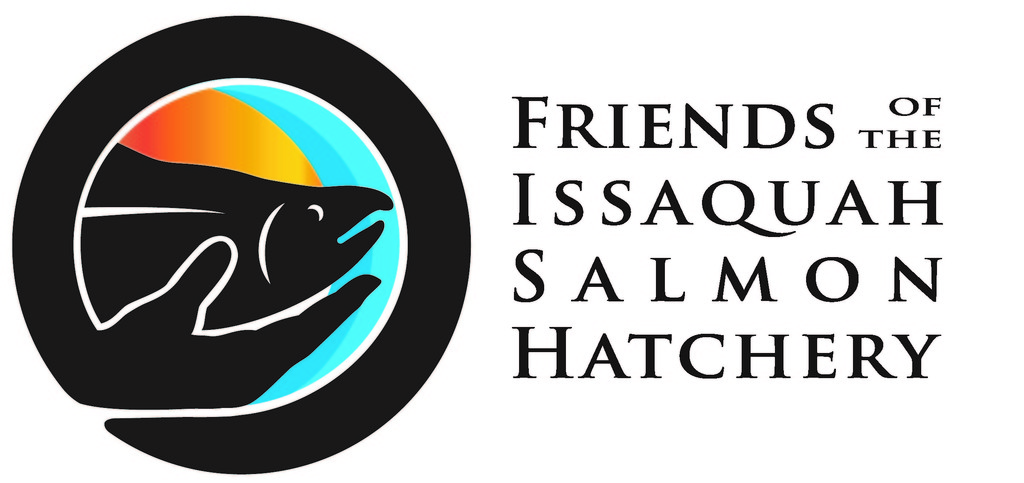The hatchery is open to visitors year-round, every day from dawn until dusk, and features 37 educational exhibits and interactive displays, an aquarium room that shows the salmon life cycle from egg to smolt, a native plant garden, a rain garden, fish rearing ponds, fish ladder with underwater windows, and viewing decks and a bridge over Issaquah Creek.
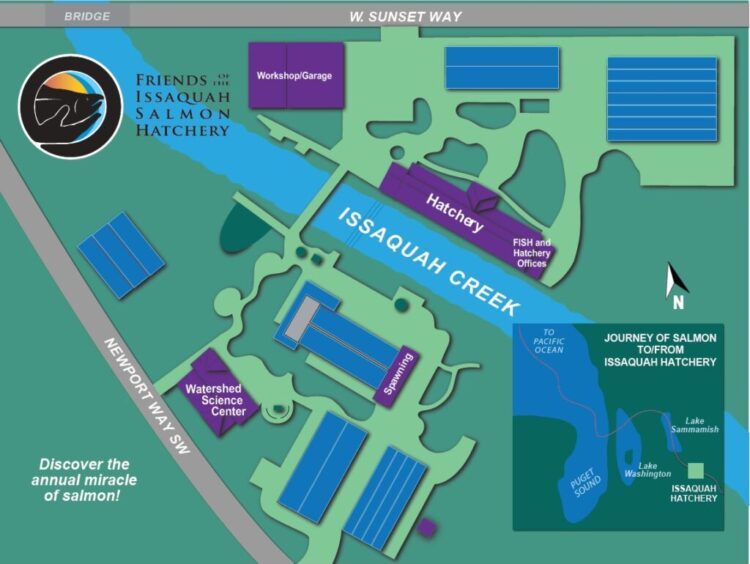
Plan Your Visit
The hatchery is open to visitors year-round, every day from dawn until dusk, and features 37 educational exhibits and interactive displays, an aquarium room that shows the salmon life cycle from egg to smolt, a native plant garden, a rain garden, fish rearing ponds, fish ladder with underwater windows, and viewing decks and a bridge over Issaquah Creek.
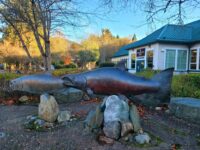
DISPLAYS
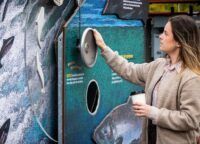
EXHIBITS
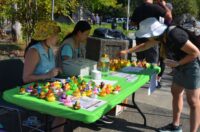
PROGRAMS
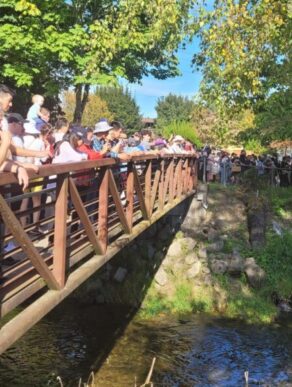
Autumn
SPAWNING SEASON!
Adult salmon arrive at the hatchery in late August for the fall spawning season. Chinook arrive first and spawn through mid-October. Coho arrive late Sept-through Nov. Visitors can view natural salmon spawning in Issaquah Creek from the bridge and decks and salmon jumping up the steps of the fish ladder. FISH volunteers join Department of Fish and Wildlife staff to help harvest eggs on Tuesdays beginning in late September.
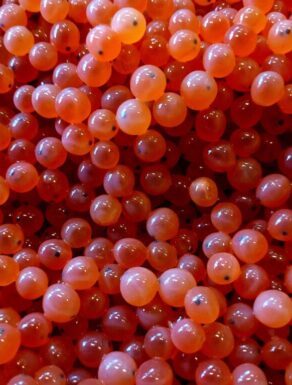
Winter
egg picking, Hatching
During the winter, staff and FISH volunteers care for millions of salmon eggs, sorting out infertile eggs from the incubation trays in the hatchery building. After hatching, the salmon fry are transferred outside to the rearing ponds (raceways), with chinook occupying the ponds in front of the building, and coho placed in ponds across the creek.
Spring
BABY SALMON RELEASE!
In the spring, about half a million yearling coho and 3 million juvenile chinook are released into Issaquah Creek. Both are released when they are transitioning from the fry to the “smolt” stage, which means they are ready to migrate from fresh water to salt water. They will make their way through lakes and rivers, following the current, out to Puget Sound at the Ballard Locks.
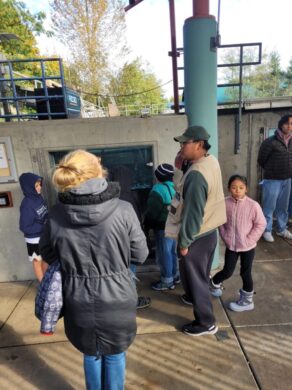
Summer
Native Plant Garden
Summer is a good time to
visit the hatchery’s native plant garden as well as the wetland. Rearing ponds
house juvenile coho, who spend a whole year at the hatchery before they are ready
to migrate. These fish will be released the following spring when they reach
the smolt stage. Now-empty chinook ponds host rainbow trout, and trout food is
available in the FISHop gift shop on weekends.
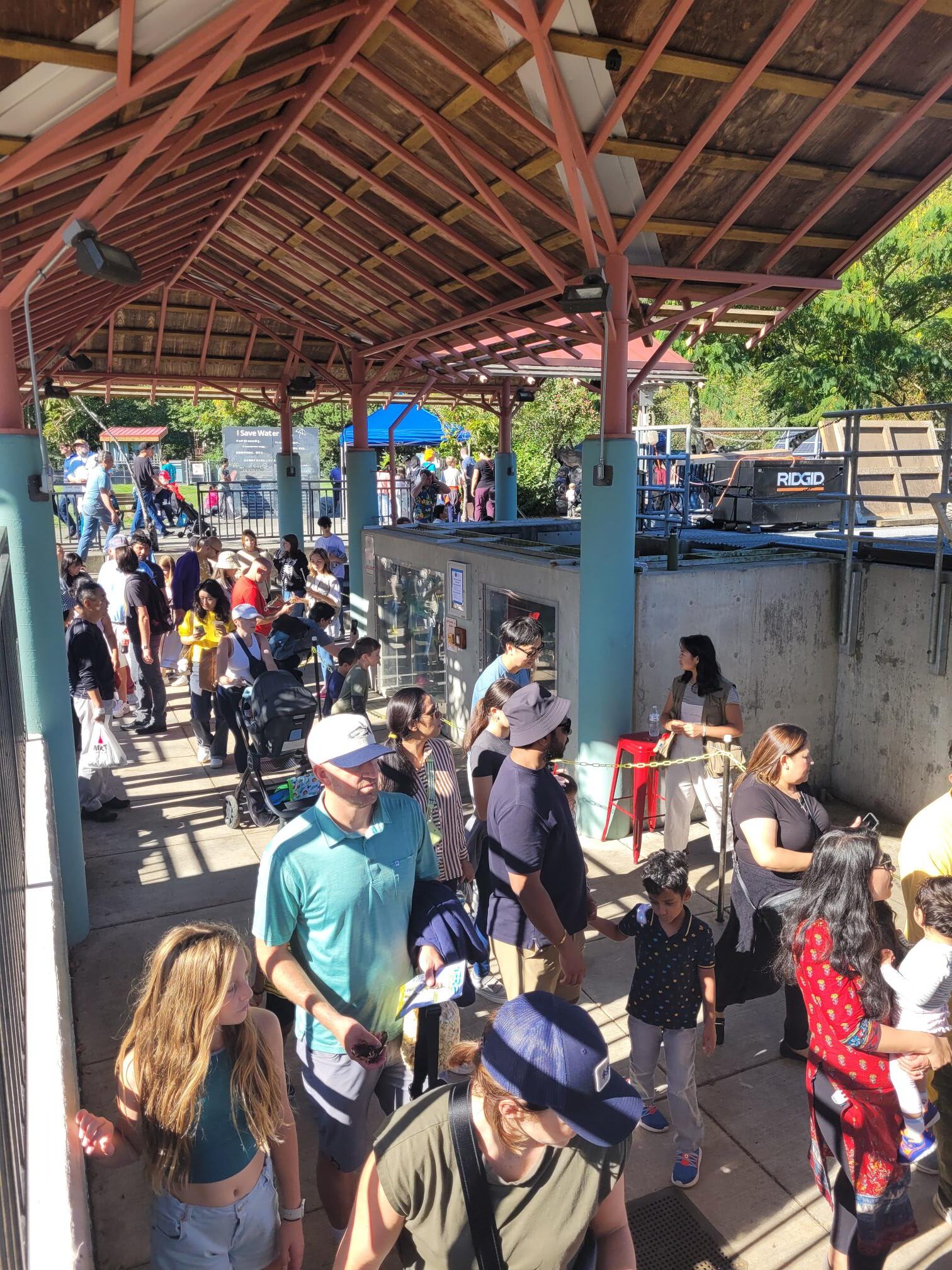
Visitors of all ages can learn a wealth of information about the salmon life cycle and watershed stewardship with a host of interactive displays at the hatchery. An audio tour also is available – just click on the QR codes! Below is a sampling of the displays you will see:
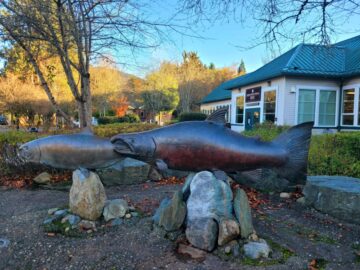
REACHING HOME
Gilda and Finley, the hatchery’s two coho salmon statues (8-feet long) was created by artist Tom Jay, the sculptures rest among – perfect salmon spawning habitat.
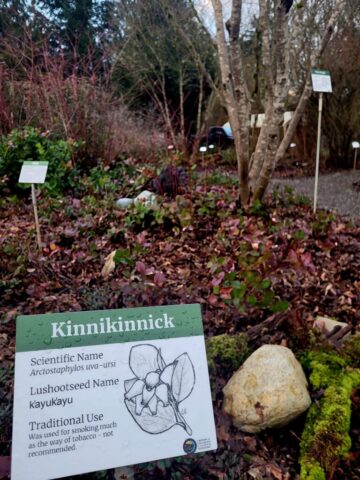
NATIVE PLANT GARDEN
The hatchery’s native plant garden shows visitors how they can use native plants to grow “salmon-friendly gardens.” These plants are labeled with their English as well as Lushootseed native names.
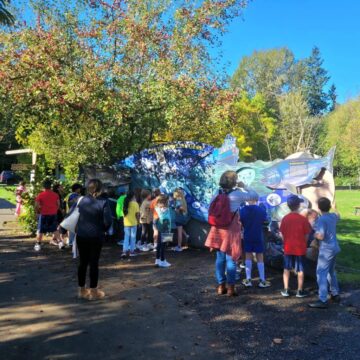
AGAINST THE ODDS?
This interactive display features issues that face the salmon including predators, fished and other challenges.
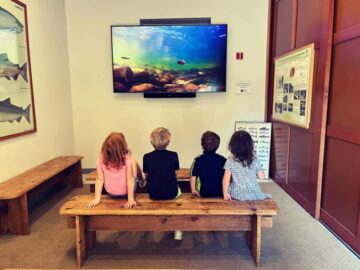
THEATER ROOM
The theater room is open daily 8:30a-4:30p and plays an 8 minute video about both the salmon hatchery & the miraculous journey of the salmon.
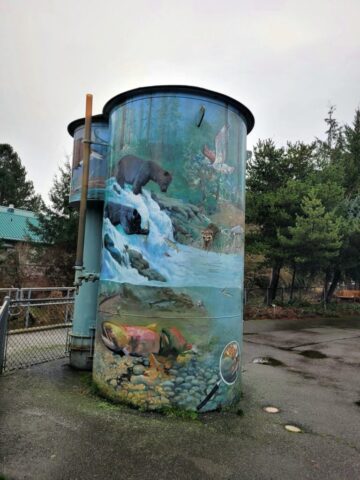
HATCHERY ARTWORK
The hatchery features over 54 pieces of public artwork including community mosaics, murals & art installations.
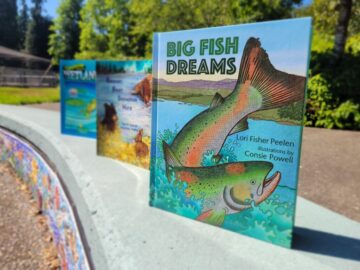
FISH GIFT SHOP
The hatchery gift shop is open on the weekends in the fall or by special request or appointment and other salmon themed educational gifts, books, hatchery gear, and local and native artist items. Call 425-392-1118 to book an appointment.
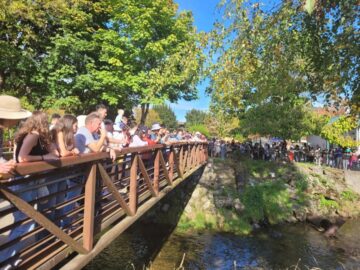
VIEWING BRIDGE
The viewing bridge looks over Issaquah Creek. During the fall, hundreds of adult Chinook and Coho can be seen migrating.
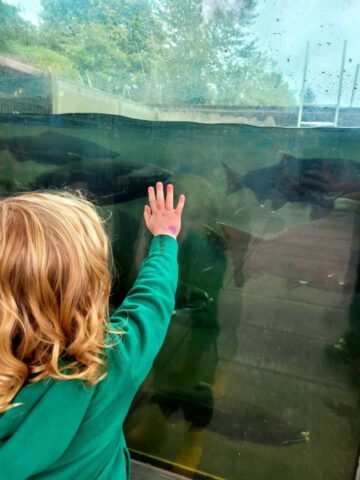
viewing windows
The glassed-in ladder and adult holding ponds let visitors get nose-to-nose with salmon.
Part of a 1990’s hatchery remodel, major funding for the redesign came from the State Department of Fish and Wildlife and the City of Issaquah.
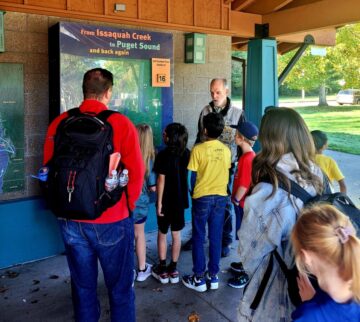
FIBER OPTIC MAP
The fiber-optic map highlights the migrating salmon route salmon from Issaquah Creek to Puget Sound as smolts and when they return as adults.
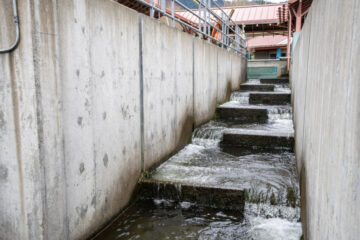
FISH LADDER
The fish ladder connects the creek to the spawning holding ponds. Visitors can view the ladder from above or through above/below water level windows.
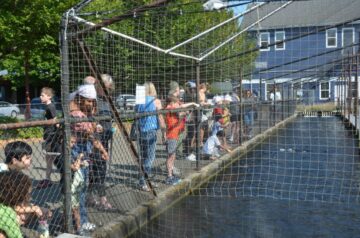
POND RACEWAYS
The hatchery features 18 raceway ponds that house juvenile coho, chinook, kokanee & trout. Spring-Fall months, visitors can feed the baby trout.
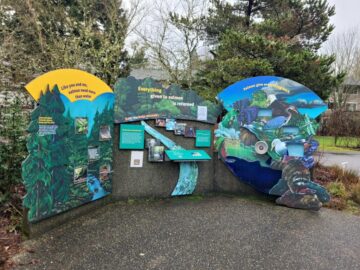
Giving Their All
This exhibit shows how the salmon nourish other animals after they die. A keystone species, 137 other species depend on the salmon for survival.
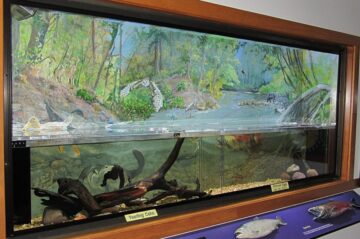
Aquarium
This exhibit shows a Pacific Northwest stream, much like Issaquah Creek. The mural was painted by artist Larry Kangas.
